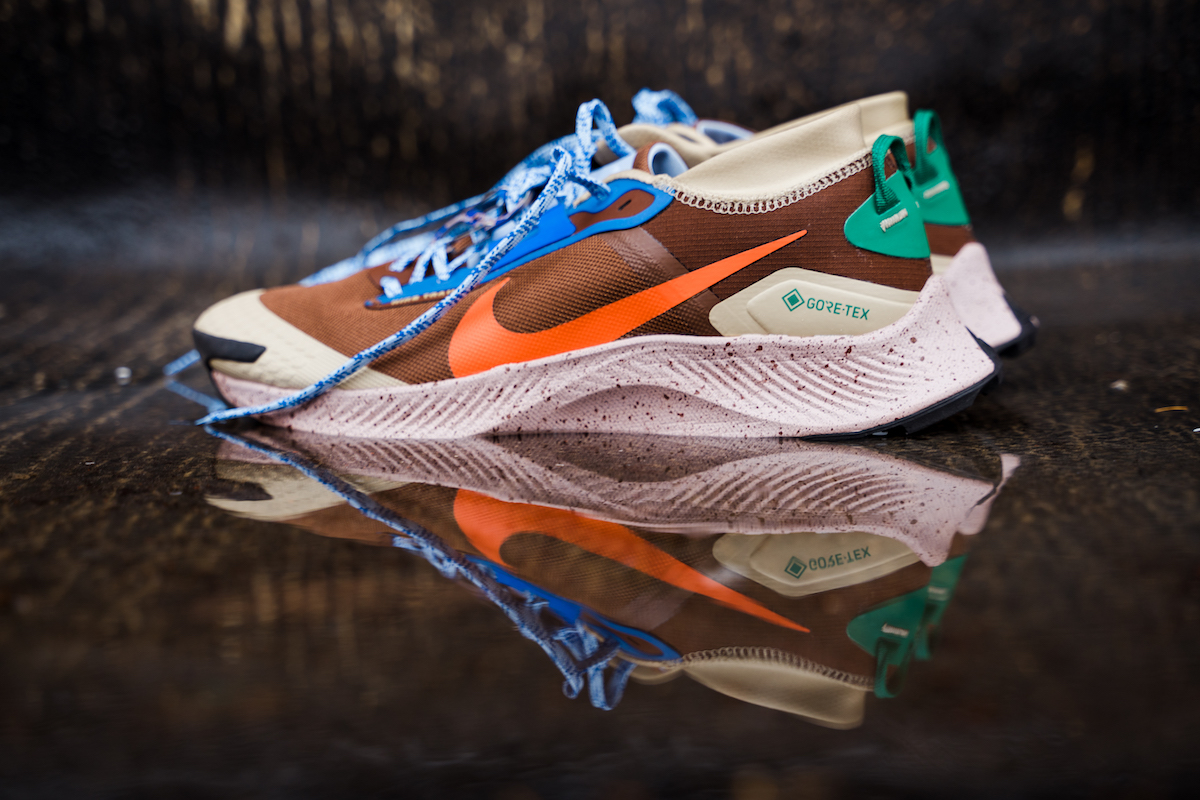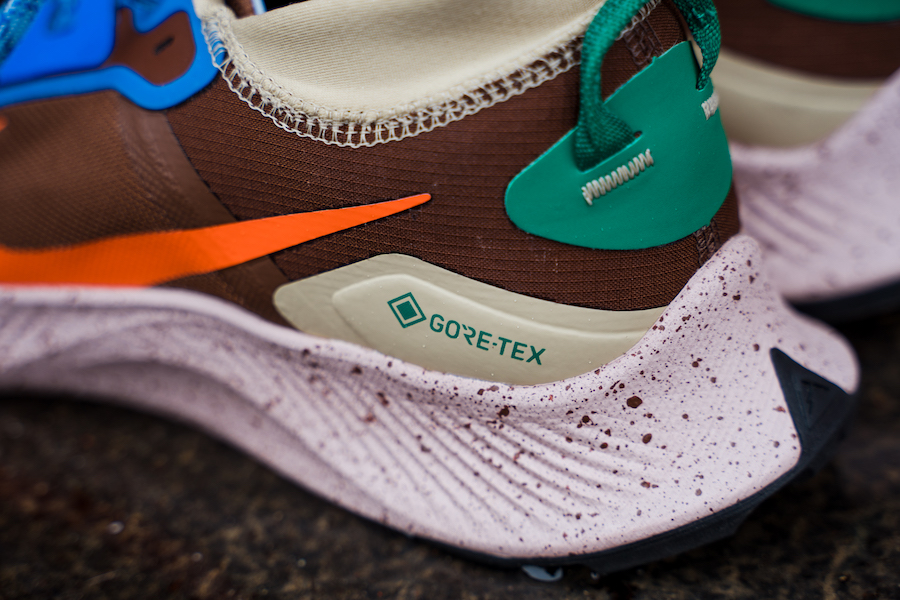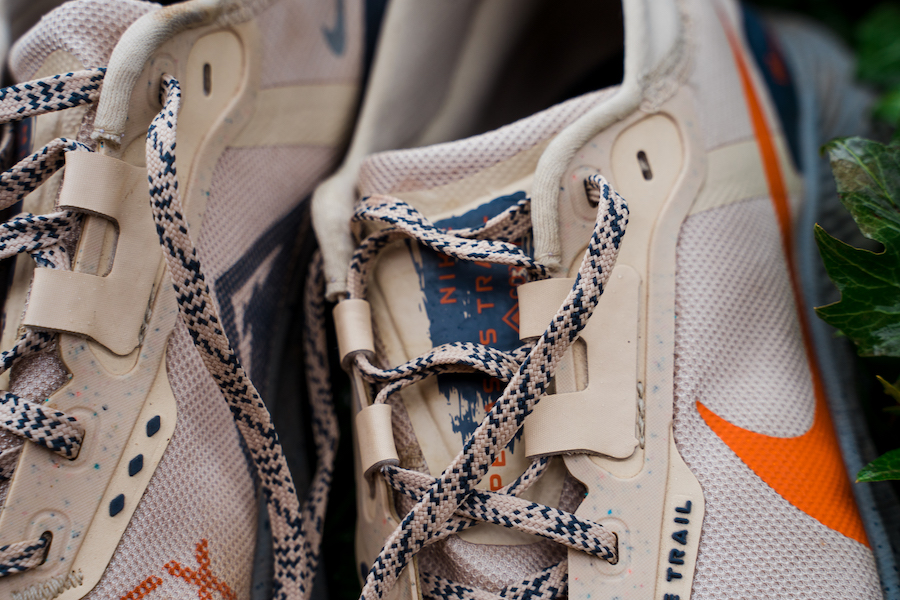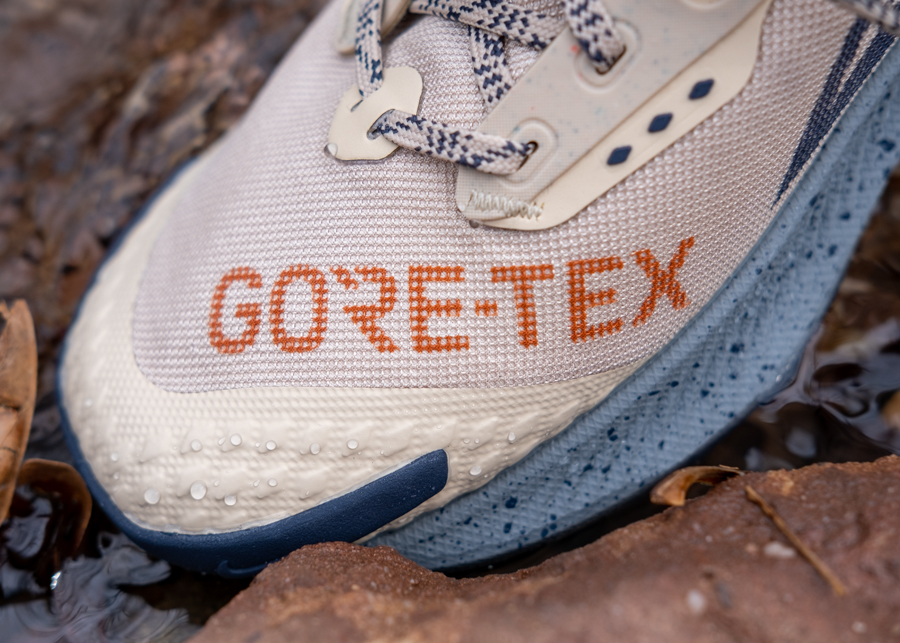
There’s nothing better than a cool, sunny day for a run. We can’t speak for you, but we don’t get to control the weather here at HQ. Sometimes we get rain, snow, or some unholy mix of the two. Instead of turning those bad weather days into some extra rest, we’ve started reaching for waterproof running shoes. But the Gore-Tex of old isn’t the Gore-Tex of today. The modern version of Gore-Tex is waterproof, of course– but it’s also breathable, durable, and lighter than ever. We wanted to learn more about it, so Thomas and Robbe sat down with Kirk Christensen to learn all about the wonderful world of Gore-Tex.
Listen to the podcast: Episode 77
After all, who’s going to know Gore-Tex better than Kirk? He’s spent nearly 20 years with the company in plenty of roles — from IT to supply chain — before settling as a product specialist on the footwear team. That means that Kirk is kinda like a small business owner in that he does it all. And while Gore-Tex is synonymous with the highest level of quality waterproofing, it also brings a whole lot more to the table.
As you could probably guess, we were pretty excited to pick his brain.

Nike Pegasus Trail 3 GTX
If you’re not super familiar with Gore-Tex, Kirk gave us the answer that only geeks can love. Essentially, it’s a polymer that gets manipulated at a microscopic level to bring out certain qualities in various products. Sound vague? Well, it has to be a little vague — the same base material gets put into running shoes, medical stents, and guitar strings.
What you really need to know is that Gore-Tex is the one-way membrane that keeps your feet dry in waterproof running shoes. However, as Kirk explained, it’s not just about being waterproof. Gore-Tex relies on three main propositions: waterproof, windproof, and climate comfort. The first two are pretty easy to wrap your head around, they keep water and wind off your toes, but the third proposition is where Robbe and Thomas had something to learn.
In the early days of waterproof running shoes, Gore-Tex usually took the form of a booty that was sewn into a shoe’s upper to add that waterproof protection. This separate layer usually added some extra insulation, giving the idea that Gore-Tex shoes were all about winter, but you might cook in the summer. Apparently, that’s not the case anymore.
Kirk broke the climate comfort proposition down into a chainlink fence example for us. “Think of water droplets as soccer balls,” he started “You throw them at a fence, and they’re not going through. Now think of sweat droplets like marbles — you can throw them through the fence no problem.” Basically, Gore-Tex has found a way to keep the water out while allowing sweat to escape and keep your foot comfortable, thanks to teeny tiny pores.
Thomas compared Gore-Tex to quite a few brands in our time with Kirk — Q-Tips, Xerox, Kleenex — if it’s ubiquitous, Thomas probably hit on it. He would know, since his dad only let him buy Gore-Tex jackets when he was younger. No other waterproofing would do. It might sound a little silly to think about, but it’s all about that Gore-Tex reputation.
Once you build that reputation, you have to work just as hard to keep it, and in Kirk’s case, that means innovation. Even though Gore-Tex isn’t out here designing shoes from scratch, it’s constantly at work to refine its membrane. As Christensen told us, “99% of the time, you take an existing style and integrate Gore-Tex without sacrificing fit and comfort.” If you’re a Nike Pegasus runner or a Brooks Ghost runner, you already have a way that you expect the shoe to fit and feel.
As you might imagine, sewing a booty into an already existing silhouette tends to impact the fit and feel just a little bit. If only there were a more subtle, almost invisible solution. Get where we’re going with this? Enter, Gore-Tex Invisible Fit.
Now, Gore-Tex running shoes have evolved to the point where the membrane and upper are one. They’re fused throughout with extra reinforcement where the upper meets the insole just to finish off the waterproofing. “Why not just add some spray-on DWR water resistance?” We asked. The simple answer is that it’s just not Gore-Tex. DWR tends to wear off after a while, and it needs to be reactivated with heat, which isn’t as good for running shoes.

Our whole point so far has been to associate Gore-Tex with waterproof running shoes. Thomas admitted that he tends to save Gore-Tex shoes for winter and might put like 30 miles a year on a pair — a confession that Christensen was happy to refute. We admitted that we hadn’t tried a shoe with Invisible Fit onboard. It was like telling a homebrewer that you haven’t tried their latest creation.
One of the key goals with climate comfort is that you can wear a Gore-Tex shoe every single day. The goal is to eliminate that need to choose — your favorite running shoe and most durable running shoe should be one and the same. It really comes back to the new Invisible Fit membrane and the fact that it lets sweat escape without adding any extra insulation.
Christensen further illustrated the everyday practicality when explaining Gore-Tex’s testing to us. They’ve had brand partners like Salomon and ASICS send their athletes out with both Gore-Tex and traditional shoes and then asked them the differences upon return. Most couldn’t tell a difference, and some even got the shoes entirely backward.
This brings us to where we are today — we’ve got some Gore-Tex Invisible Fit shoes on the way to the office as you read this. We’ll put ’em through the wringer to see if Gore-Tex is ready for every day. Stay tuned.

So, if Gore-Tex is already at the point where it barely adds any weight (around 15 grams) and doesn’t cook your foot, we had to ask what’s next. This is where Christensen really got excited. As a guy who professed to us that he doesn’t sit still very well, he’s already ready for what’s next.
One of the key changes he clued us into is improved testing. Gore-Tex was already on the trail to better testing pre-COVID, but now Kirk and his team are ready to get back at it. He explained that it’s easy to get feedback on fit, but it’s much harder to gather data quantitatively. “Anecdotes aren’t good enough for Gore,” he told us. While we’re over here getting geeky over testing, there are a few improvements that we can all get pumped for.
Try Gore-Tex yourself: The best winter running shoes
Gore-Tex is well on its way to a more sustainable future. The goal is to get PFCs out of the process, a plan that Gore-Tex and its brand partners are aligned on. We’re at the point where ASICS, Nike, and others are pushing for just as many environmentally conscious practices to reduce the carbon footprint. Gore-Tex is also researching the life cycle of products and how it impacts a landfill once we’re done with it.
One thing we can’t tell you is where you might see Gore-Tex next. Trust us, we tried to pry it out of Kirk, but he wasn’t letting anything slip. All he was willing to say was that Gore-Tex is already talking to new brands, which sounds pretty good to us.
Guess we’ll just have to wait and see together.




Have something to say? Leave a Comment
The best in class waterproof yet breathable socks that provide the most reliable performance in all weather and terrain conditions.